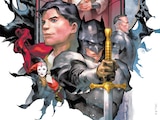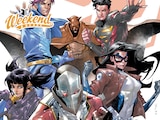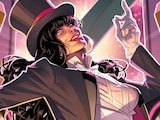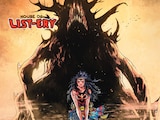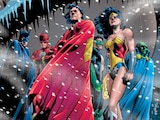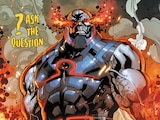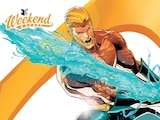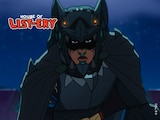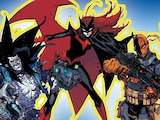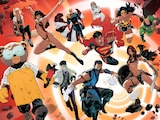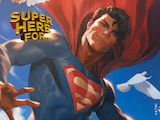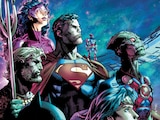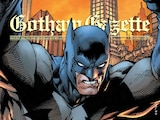Everyone has to start somewhere—even Superman. As fans of the Man of Steel know, that place was Smallville, the bucolic Kansas town made famous in Richard Donner’s classic 1978 Superman and in the long-running TV series of the same name. Clark’s pre-Metropolis days may not be entirely new territory, but you’ll be forgiven if you find yourself forgetting that while reading Superman of Smallville, the new middle grade graphic novel that explores Superman’s earliest days in the cape. Written and drawn by Art Baltazar and Franco, Superman of Smallville introduces us to a 13-year-old Clark Kent who’s just begun his life as a hero. It’s an upbeat, energetic, brightly-colored look at a Superman who’s still discovering how best to use his gifts to help mankind.
None of which should be at all surprising to anyone familiar with the book’s creative team. Baltazar and Franco are longtime collaborators known for their colorful style and kid-friendly approach to comics. It’s a creative vision so unique and appealing that even before the launch of DC’s new line of books for young readers, Baltazar and Franco were applying it to DC series like Tiny Titans, Superman Family Adventures and Super Powers. In short, at a time when there were very few superhero comics aimed at kids, Baltazar and Franco were successfully making them.
Superman of Smallville represents something both highly familiar and boldly new for the creative team. Anyone familiar with their earlier work will instantly recognize the bright, rounded art that fills its pages. But it’s also part of a new line of books designed to bring fresh readers to the world of comics. That means more young eyes discovering Baltazar and Franco’s work. But if the collaborators are feeling any pressure, they sure weren’t showing it when we spoke to them earlier this summer.
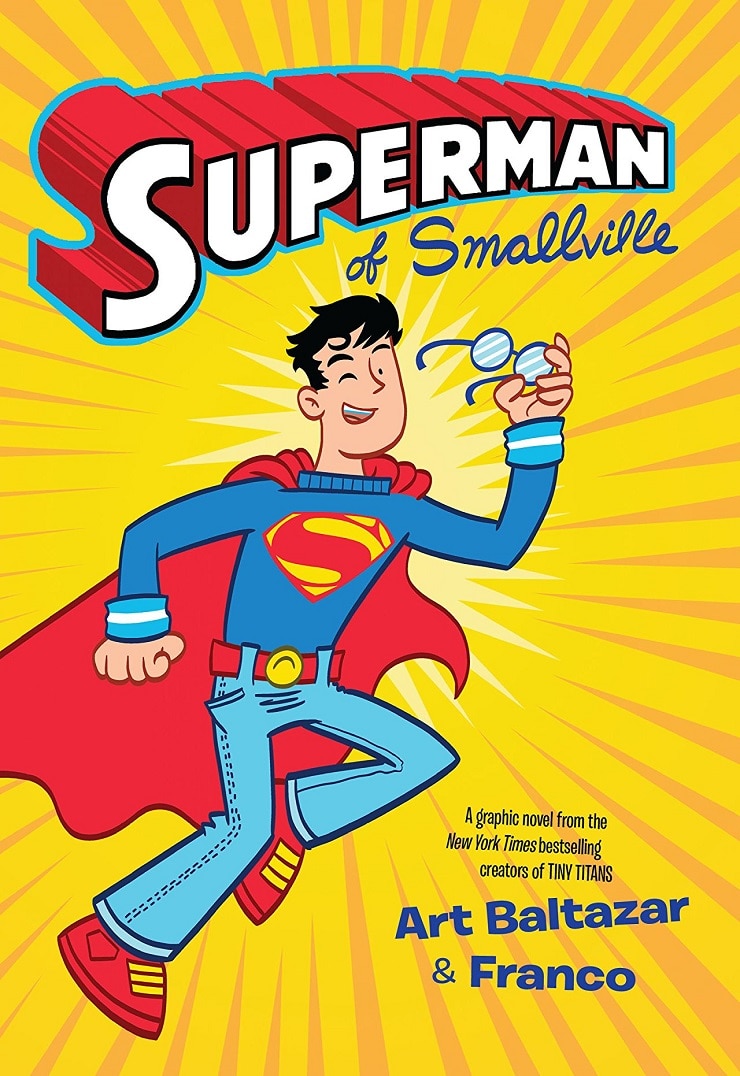
What is Superman of Smallville about?
Art Baltazar: It starts with Superman’s first day of middle school, and he’s just shown the world that he’s Superman. He just started saving people, and he’s like, “Hey, they’re calling me Superman.” And his parents are like, “Well, you told them you’re Superman.”
Basically, he’s just revealed himself to Smallville.
Knowing it would be part of a new line of books, did you approach Superman of Smallville any differently than you did your other books for DC?
AB: A little bit. There are a lot fewer inside jokes than we had with Tiny Titans. There are less gags, and it’s more of a whole 120-page story and not broken down into smaller chapters. It’s been fun.
Since this is set while Clark’s growing up in Smallville, can we expect to see other characters from that era in it? Will we see Lana Lang?
Franco: You’re going to see Lana Lang. You’re going to see Ma and Pa Kent. You’re going to see Lex Luthor in his early stages.
AB: You see Pete Ross in there. We go deep into Smallville—well, as deep as we could with the first volume.
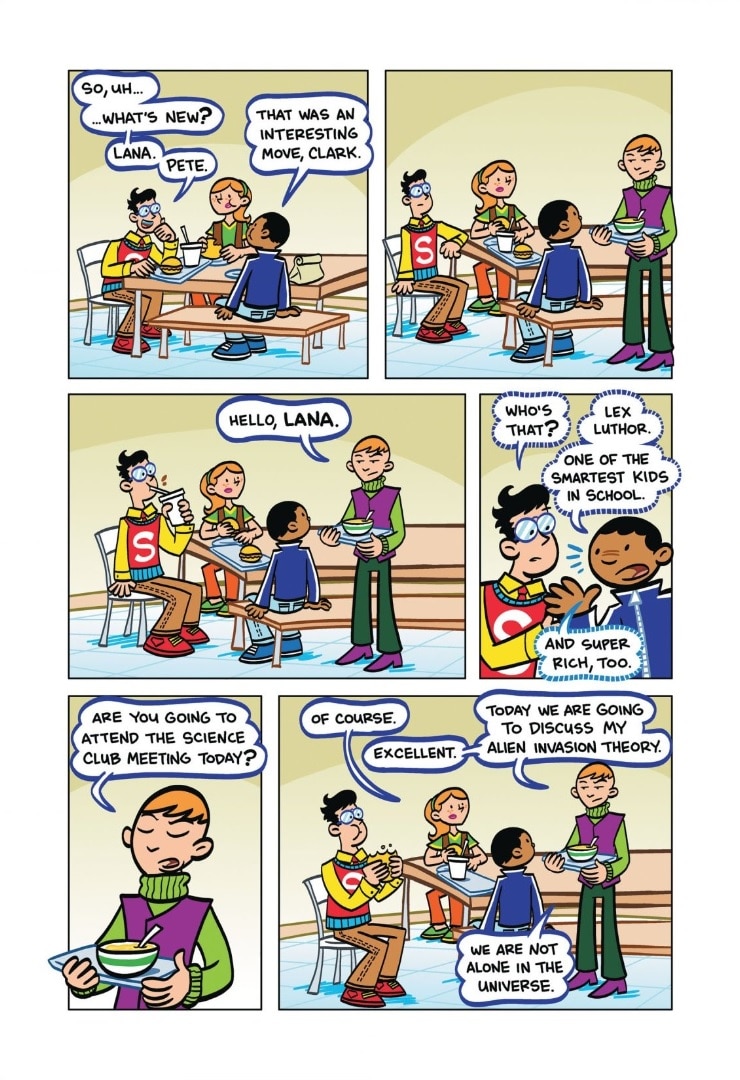
You’ve had a few Superman projects for us—Superman Family Adventures and Super Powers come to mind. How do you keep your Superman ideas fresh, but also remain true to your style?
AB: We live this guy. We had enough stories for over fifty issues of Superman Family Adventures. We had to condense it all, but we have a lot that we’re still saving. Hopefully, we’ll get a chance one day to use all the stories we came up with. We could probably write him for the next thirty years, if they let us.
F: The hardest thing about this was starting from a new beginning. It was kind of easy, but hard because we weren’t bound by any continuity that came previously. We gave him a brand-new start, but as soon as we started writing it, we started asking ourselves, “How about this? How about that? What about that character?”
It just ballooned into something where we had to stop and take a step back and realize that it’s only the first book. We’ll just do this for now and we’ll build up to those other things if it allows.
AB: We had so much material, but we couldn’t fit it all into this book. We have enough for a long series.
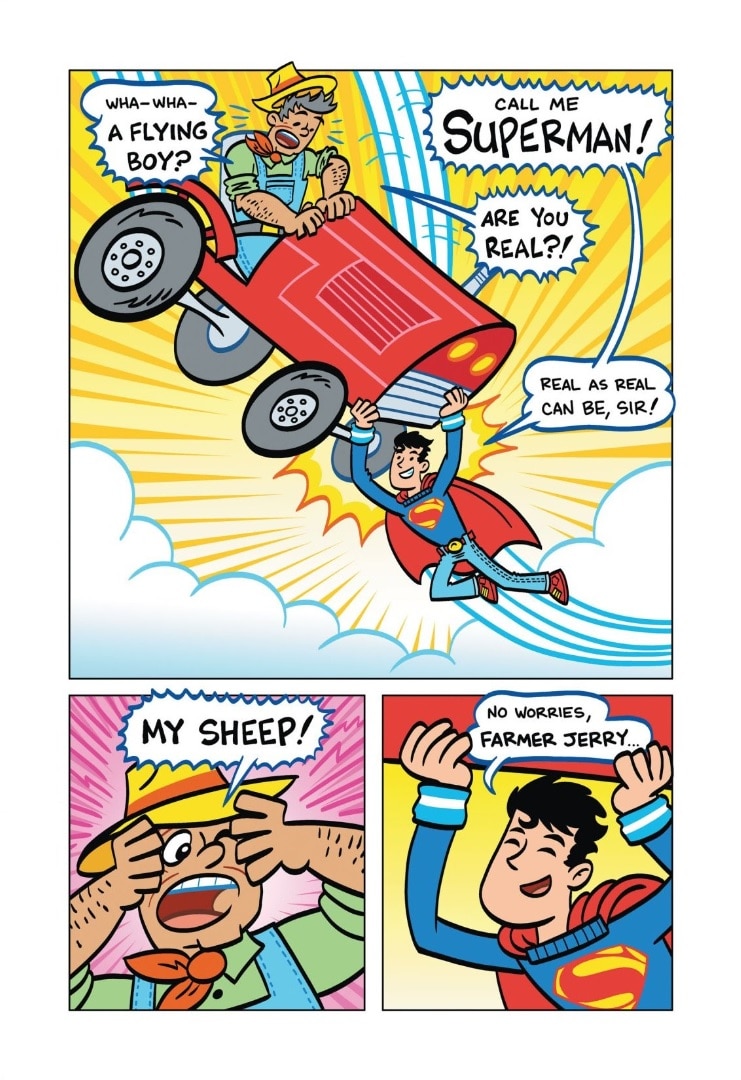
The two of you were creating kids comics for DC when we weren’t really doing kids comics. You’re kind of like—
F: Lewis and Clark!
Yeah! When you found out about this line, was your thinking…well, haven’t we already been doing that?
AB: It was cool because we always talked to each other about how DC should do something like this. When it finally happened, I kept thinking, “Man, I hope they call us. I hope they make us part of this.”
I felt honored when it happened. I didn’t think it was automatic. I’d heard that they were getting outside authors—novelists—to write these characters. I was just hoping they’d let us do something.
Obviously, your style lends itself to all-ages comics and comics for kids. Is that just something you’ve always believed in? How did you come to develop this style of yours?
AB: We both watched cartoons—Bugs Bunny, Hanna-Barbera, Woody Woodpecker, Tom and Jerry… That was me. I even draw like Hanna-Barbera a little bit. I never even thought about doing anything else. I’m a cartoonist in my heart and blood. I can’t draw like all these other guys. I can’t draw like Jim Lee, even though I try. It just doesn’t look as good!
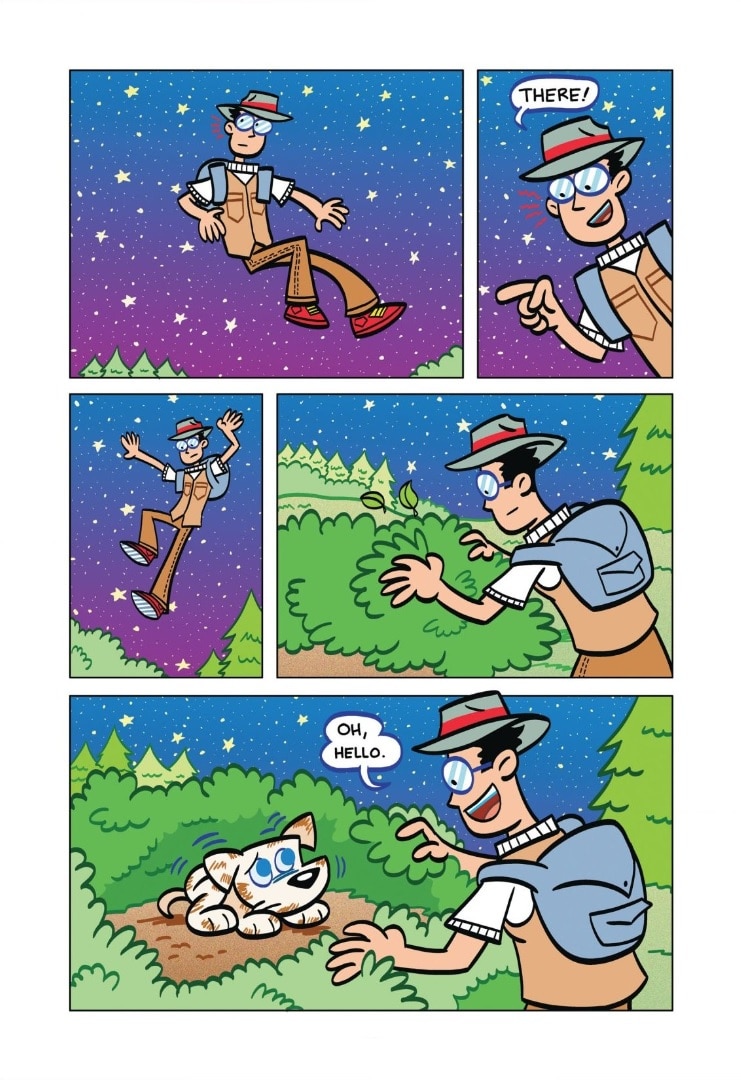
As creators who have been writing and drawing books like Superman of Smallville for a while now, how important do you think it is to have comics aimed at young readers?
F: DC has the most iconic characters in the world. Everybody in the world, whether they’ve read a Superman story or not, knows who Superman is. They know who Batman is. They know who Wonder Woman is. Even if they’ve never read a story about them. To be able to tell stories for kids, and having it be their first comic or their first introduction to a story written about a hero they love, that’s a huge honor for us. We’ve done that for years.
When we wrote Tiny Titans, we described it this way. You watch Bugs Bunny as a kid, and it’s really funny because he just hit Daffy Duck with a frying pan. But then you watch Bugs Bunny as an adult, and you’re like, “Hey, did Bugs Bunny just say what I thought he said? That’s pretty funny!”
We always approach it that way. What people don’t know us for are the other stories that we’ve told—long, drawn out stories with many chapters. We’ve written a lot of those too, and people are surprised when they learn that we can do that as well.
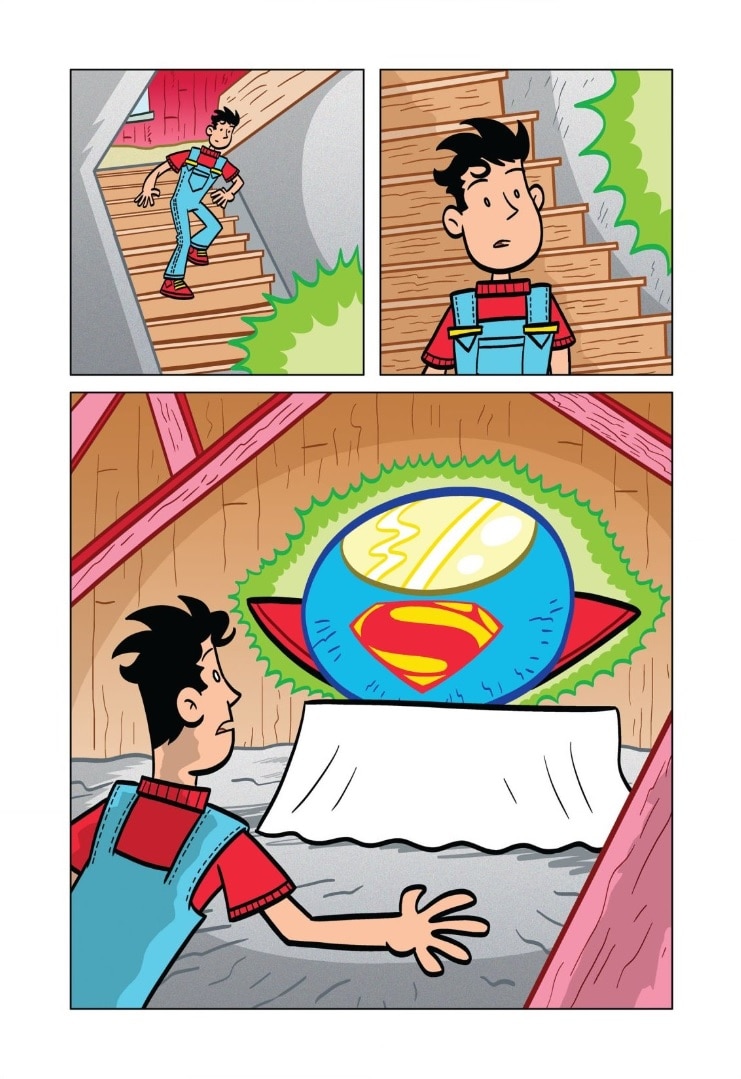
You hit on something which is that your comics really are all-ages books, and I know a lot of people who read them are older. How much of your fanbase is kids versus adults who just share your sensibilities and like your approach to comics?
AB: There are a lot of kids now. When we first started, we were considered all-ages and we were literally getting all ages. We had all kinds of people buying our books. We make books so kids can read them, but they’re not for kids. It’s like Dora the Explorer is for little kids, but SpongeBob you can watch with your mom and dad, and they’ll laugh too. We kind of have that mentality. We’re going to write something funny that’s funny for everyone, no matter how old you are. That’s what we’ve always done.
F: Like you said, we’ve been working with DC for a while. Even at San Diego Comic-Con this year, at least ten people came up to us and said that their kids learned to read because of Tiny Titans or our other books, and now they’ve gotten older and are reading other comics. That’s because the parents recognized the characters we were working on and thought, “Hey, that’s kind of cute. We’ll buy that for our kid.” But then they read it too and they all like it and often come back for more. We have fans that show up at cons every year just looking for whatever we have that’s new.
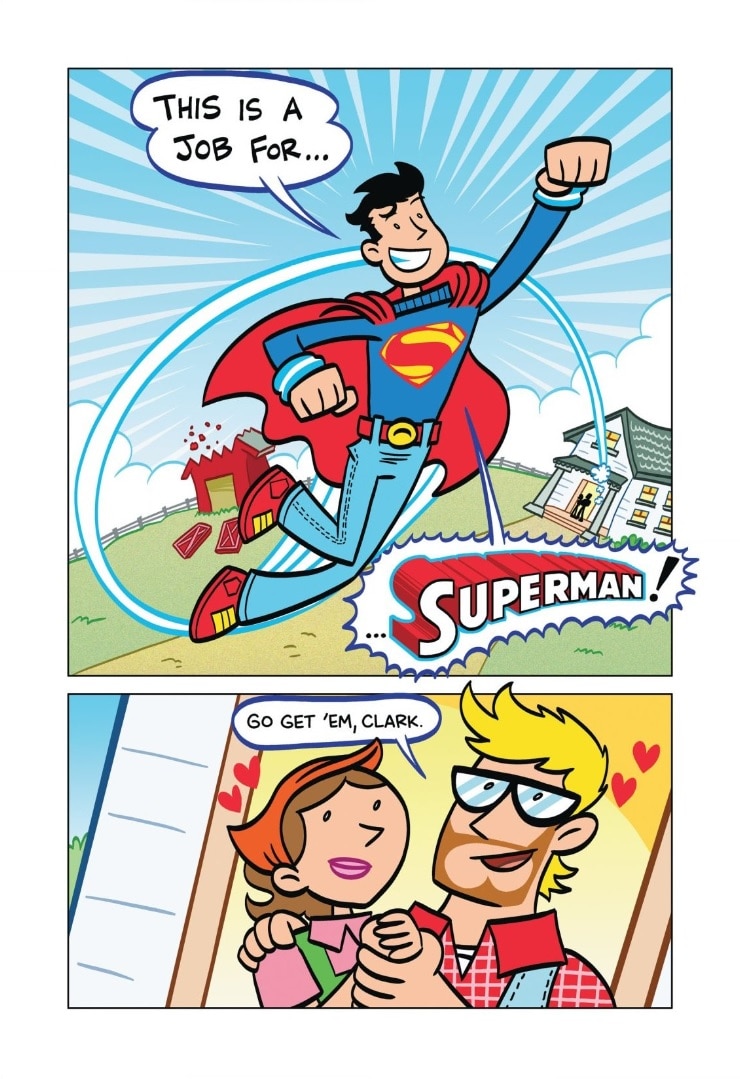
Superman of Smallville could be some young readers’ first foray into Superman and his world. What’s your first memory of Superman from when you were kids? Was it the movie?
AB: I remember watching the TV show with George Reeves with my dad, and then Super Friends came on and I started watching that. Then I got the comic books that had different Justice League heroes than Super Friends. I think Red Tornado was on it and Black Canary—I didn’t know who she was. I didn’t know Green Arrow.
I also had the toys—the old Mego toys. And then of course, Superman: The Movie. And that was it. That solidified my love for Superman for the rest of my life.
F: We’re about the same age, so it was the same track for me. The George Reeves Superman, Super Friends on TV, and from there it just kept going to comics, movies and everything else.
AB: I still buy Superman toys. It’s ridiculous. I can’t ever give it up. I just keep buying them!
Superman of Smallville by Art Baltazar and Franco is now available in bookstores, comic shops and as a digital graphic novel.

